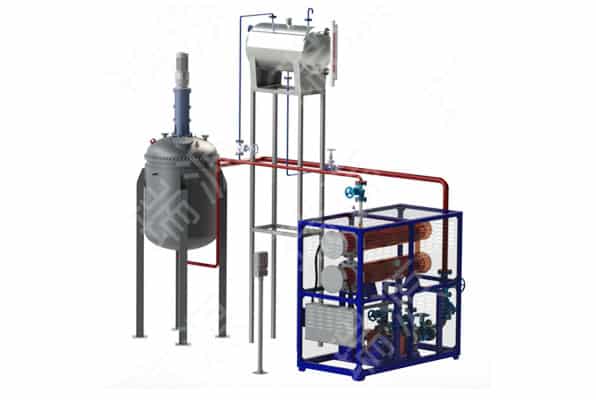In chemical and pharmaceutical industries, the reactor is key. Reactions inside it decide product quality. Heat and temperature control are critical. You need the right heating. You also need to know the exact temperature inside.How do you heat reactors? How do you measure its temperature accurately? Let’s explore.
Part 1: Heating Methods for Reactors
You have several options for heating. The best choice depends on your needs.
1. Jacketed Heating
A jacket surrounds the reactor vessel. A heated fluid flows through this jacket. This warms the reactor.
- Thermal Oil Units: A separate system heats oil. The hot oil is pumped through the jacket. This gives very precise temperature control. It also allows for cooling.https://8ruiyan.com/en/all-organic-heat-carrier-boilers/

2. Electric Heating Mantles
This is a jacket with built-in heating elements. It wraps around the reactor. It is common in labs.
- Преимущества. Simple and cost-effective.
- Disadvantages: May cause hot spots. Not ideal for large reactors.
3. Steam Heating
Steam is sent into the reactor jacket. It is very efficient. It heats things quickly.
- Disadvantages: Maximum temperature depends on steam pressure.
4. Direct Immersion Heaters
A heater is placed directly into the liquid. This is very fast.
- Disadvantages: The heater must resist corrosion. It is not good for all mixtures.
Part 2: How to Measure Temperature Precisely
Heating is not enough. You must know the true temperature inside. Accuracy is vital for safety and quality.
Use the Right Sensor
- RTDs (Resistance Temperature Detectors)
These are very accurate and stable. They measure temperature by tracking resistance changes. They are often the best choice for precision. - Thermocouples
These are rugged and cover a wide temperature range. They are less accurate than RTDs but are good for many uses.
Use a Thermowell
Always protect your sensor. A thermowell is a metal tube. It is installed into the reactor.
The temperature sensor sits inside the thermowell. This protects the sensor from:
- Chemical damage
- High pressure
- Physical wear
A good thermowell gives you a true temperature reading.
Best Practices for Control
- Place Sensors Wisely: Use multiple sensors. Put them at different levels in the reactor.
- Calibrate Often: Check your sensors regularly. Compare them to a known standard.
- Use a PID Controller: This device uses the sensor signal. It automatically adjusts the heating power. This keeps the temperature perfectly stable.
Заключение
Good reactor control needs two things. First, you need effective heating. Second, you need precise temperature measurement.
Use a protected sensor like an RTD in a thermowell. Connect it to a control system.
This approach ensures your process is safe. It ensures your product quality is high. It turns your reactor into a reliable tool.
For further consultation, please contact our technical team for expert advice.
Whatsapp:86-19106101570
wechat:86-19106101570
email:fob@jsryan.com
